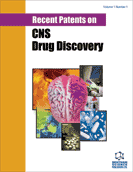Abstract
Melatonin, the pineal gland hormone, is widely distributed in mammalian tissues and exerts its action via two melatonin receptor sub-types, MT1 and MT2. Melatonin is known to play functional roles in regulating circadian rhythms and seasonal reproduction. In recent years, growing evidence has also linked melatonin to a variety of other body systems and disease states, thus highlighting its significance as a therapeutic agent. However, due to its properties, melatonin is ineffective in clinical use, thus prompting the development of melatoninergic ligands that mimic the actions of melatonin but in a manner that is more potent and specific for melatonin receptors. An additional focus has been to develop ligands that exhibit receptor subtype selectivity. While there are over seventy patents on melatoninergic ligands, success in developing therapeutically effective melatoninergic ligands have been varied. However, the recent approval of Ramelteon for treatment of sleep disorders and the evaluation of other compounds in clinical trials have highlighted their clinical importance. In this review an overview of recently developed novel melatoninergic ligands is provided including recently filed patents and compounds undergoing clinical evaluation.
Keywords: Melatonin, melatoninergic ligands, MT1 receptor, MT2 receptor, ramelteon, sleep disorders, patents
 4
4

